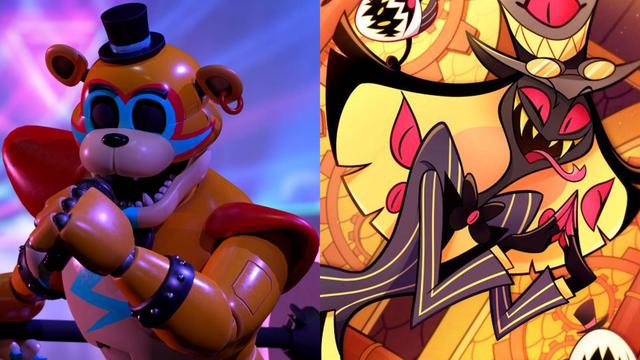If you click on a link and make a purchase we may receive a small commission. Read our editorial policy.
Gwen Stacy is President of the United States in the Marvel U (and it’s about time)
Hail to the chief: Did Marvel just make Gwen Stacy President of the United States?

Gwen Stacy has been known by many titles throughout her life. Daughter, friend, hero, and icon. Now she’s adding a new title to the mix – President of the United States. That’s right, in Spider-Gwen: Shadow Clones #5 (written by Emily Kim and penciled by Kei Zama with Geoffo) Gwen Stacy is seen as the President of the United States. How does a former ESU co-ed become leader of the free world? We can thank the multiverse for that.
Warning: Spoilers ahead for Spider-Gwen: Shadow Clones #5!
President Gwen Stacy

Dr. Lyla Bennett really hates Gwen Stacy. The deranged scientist blames Gwen for the death of her husband, so she’s reacting as any rational person would – by creating a machine designed to destroy every Gwen Stacy across the multiverse. Like I said, she really hates Gwen Stacy.
Dr. Bennett’s scheme involves cloning Gwen and giving each of the clones powers based on the Sinister Six. Some of them are cleverly named, like the Rhino who is now called Rhi-Gwen. For somebody that hates Gwen Stacy so much, it’s odd that Dr. Bennett’s plan involves creating more variants of her.
As the mini-series has progressed, some of the clones have betrayed Dr. Bennett and joined forces with Spider-Gwen. As you can imagine, they aren’t too keen on the idea of destroying every version of themselves in the multiverse. In Spider-Gwen: Shadow Clones #5, the clones attempt to destroy Dr. Bennett’s machine, and they’re surprised to see all the versions of themselves across the multiverse.
“Is that me at a rodeo,” the Sandman version of Gwen asks. “Forget that…I think I see one where I’m the President,” the Doctor Octopus version of Gwen notes. Sure enough, we see an image of Gwen sitting at the Resolute Desk, looking Presidential. This version of Gwen Stacy is later seen when Bennett’s machine goes off. As President Gwen Stacy winces in pain, she’s surrounded by Secret Service men coming to her aid. Thankfully the machine is destroyed, so President Stacy is able to serve out the rest of her term.
President Gwen Stacy is only seen for two pages in the story, but her existence is fun to contemplate. What kind of policies did she campaign on? What kind of attack ads did her political opponents run against her? Is it possible that she’s Spider-Gwen in this world too? It would be interesting to have a President moonlighting as a superhero.
According to the United States Constitution, the President of the United States must be at least 35 years old, a natural born citizen of the US, and a US resident for at least 14 years. This means that President Stacy is either 35 years old, or her reality has a different set of Presidential requirements. It’s possible the Presidential eligibility requirements were changed, allowing younger people to run. In 1974 DC Comics published Prez, a comic about a teenager who became President after the eligibility age was lowered to 18. Perhaps Gwen has a similar origin.
Gwen Stacy’s political roots

Truth be told, Gwen Stacy going into politics has always felt right to me. Some versions of the character have been portrayed as a scientist, but I was never sold on that concept. Gwen’s interest in science was a big part of her characterization in the comic book mini-series Spider-Man: House of M (2005), the Spectacular Spider-Man animated series, and Marc Webb’s Amazing Spider-Man film series.
Where did this idea come from? In Amazing Spider-Man #53 (1967) Gwen tells Peter that she is a science major. This factoid is never brought up again, but the single mention has been used to shape her characterization in flashback stories, alternate timelines, and media adaptations. Yet Stan Lee and John Romita’s Amazing Spider-Man run, Gwen rarely brings up science. However, she is shown to have a strong interest in politics.
In Spectacular Spider-Man Magazine #1 (1968), Gwen spends her free time campaigning for a mayoral candidate named Richard Raleigh. In Amazing Spider-Man #91-92 (1970) Gwen gets involved with Sam Bullit’s district attorney campaign. Gwen joined a group of campus protesters in Amazing Spider-Man #69 (1968), and chided Peter for not being more politically involved in Amazing Spider-Man #70 (1968).
It’s true that the Gwen Stacy we know today is a far cry from her Silver Age roots. Spider-Gwen and all of her other counterparts have had the opportunity to grow and find an identity outside of being Spider-Man’s girlfriend. However, it’s still interesting to note that Stan Lee and John Romita depicted Gwen as a politically active person. With that in mind, it shouldn’t come as a surprise that one version of Gwen became President of the United States.
Gwen Stacy, you’ve come a long way

As I look at the image of Gwen Stacy sitting at the Resolute Desk in the Oval Office, I can’t help but marvel at how far she’s come. For years, Gwen Stacy was nothing more than a symbol of guilt for Spider-Man. She was Peter Parker’s Silver Age girlfriend, who was mostly known for dying tragically. At times her death seemed like it was the most important thing about her. If Gwen was brought up in a Spider-Man comic, it was so Peter could feel guilty about his failure to save her.
Now Gwen Stacy is a huge part of the Marvel Universe. She has starred in multiple ongoing titles, Marvel has launched a series of variant covers reimagining her as different heroes, and she’s a popular cosplay choice. In addition, Gwen Stacy currently plays a large role in the animated film Across the Spider-Verse. This version of Gwen has tons of character development and isn’t defined by her relationship with Peter Parker.
In addition, there are some themes and imagery in Gwen’s storyline which have caused some viewers to theorize that the character might be trans. For more on that, check out this wonderful piece by Popverse’s Avery Kaplan. The fact that the conversation is even happening is a testament to how far Gwen Stacy has come. Not bad for a character who died in 1973.
I should note Spider-Gwen is technically a different Gwen Stacy than the one who dated Peter Parker in the Silver Age and died in Amazing Spider-Man #121 (1973). However, an alternate reality variant of Gwen Stacy is still Gwen Stacy. In fact, the creation of Spider-Gwen (aka Ghost-Spider) is part of the reason why the character has taken on a new life.
Emma Stone’s portrayal of Gwen Stacy in Marc Webb’s Amazing Spider-Man film series went a long way in raising the character’s profile beyond “Peter Parker’s dead girlfriend.” The popularity of Stone’s portrayal inspired the creation of Spider-Gwen for the 2014 comic event Spider-Verse. Robbi Rodriguez’s design undoubtably took fandom by storm, becoming a cosplay favorite.
President Gwen Stacy might be a small part of the Spider-Gwen: Shadow Clones mini-series, but she represents so much more. In 1973 a superhero’s girlfriend was meant to complicate the hero’s life, and rarely had any agency of her own. Now Gwen Stacy is a major player in an animated summer blockbuster, the star of her own title, and the leader of the United States. Not bad for someone who died 50 years ago.
Is Marvel's Spider-Gwen trans? The Spider-Man: Across the Spider-Verse speculation explained.
Follow Popverse for upcoming event coverage and news
Find out how we conduct our review by reading our review policy
Let Popverse be your tour guide through the wilderness of pop culture
Sign in and let us help you find your new favorite thing.
















Comments
Want to join the discussion? Please activate your account first.
Visit Reedpop ID if you need to resend the confirmation email.